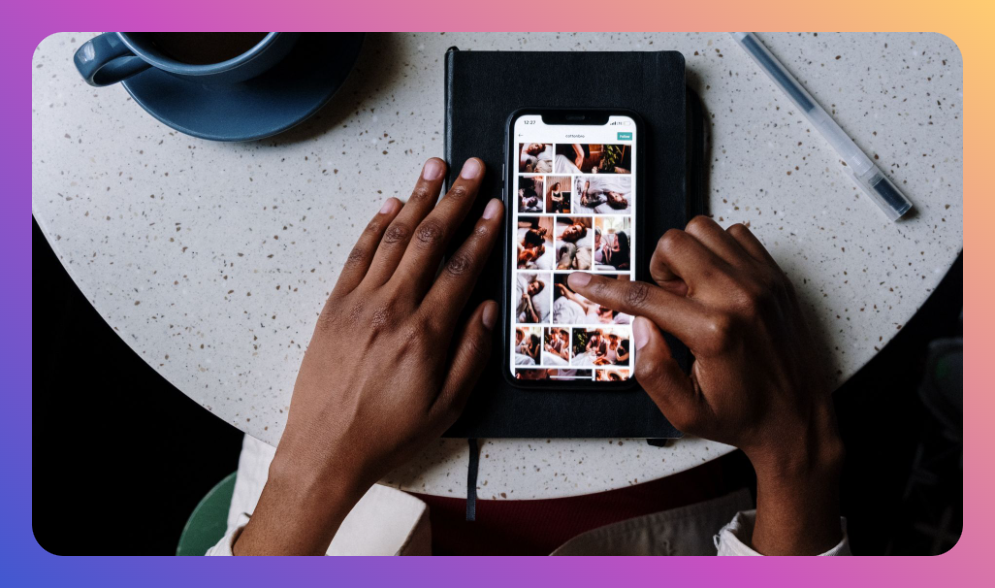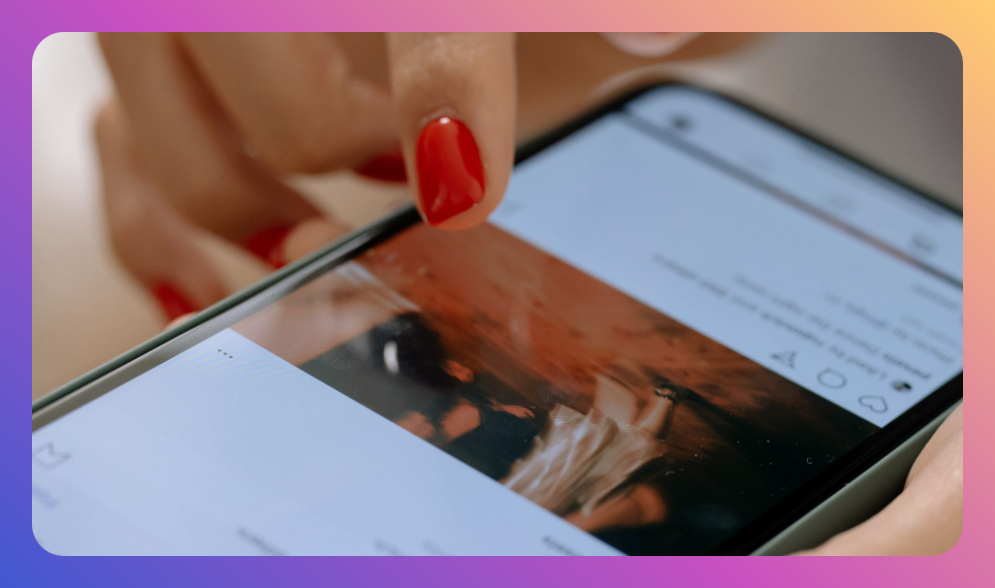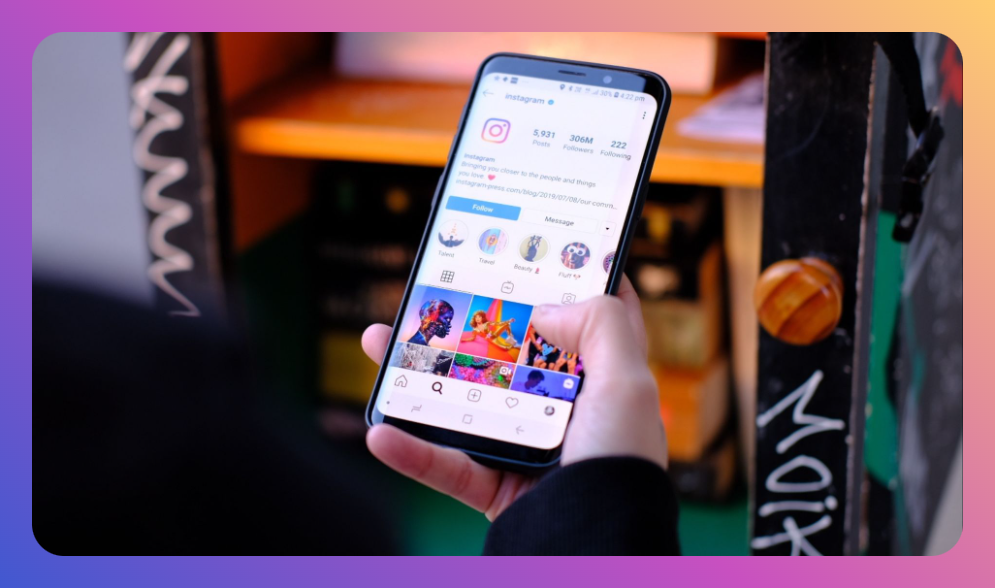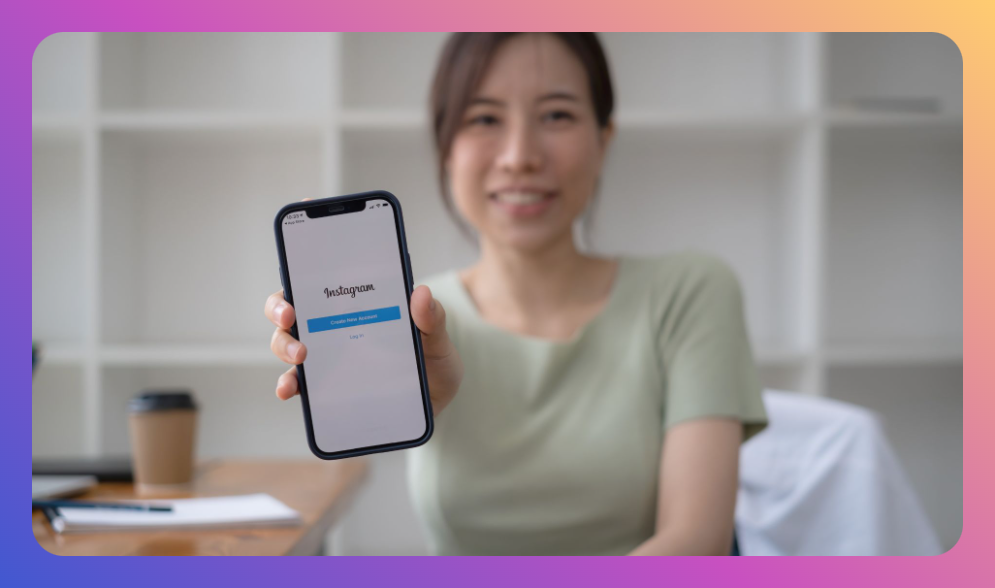Trying to get ahead of the curve on custom marketing visuals you should consider?
We’re here to help with that.
Most marketers today are using visual content to promote their brand. In fact, 91% of marketers are using visual content. But with so many marketers using the same visual content types, how do you make sure your visual content stands out from the crowd and is memorable to your audience?
The answer is custom marketing visuals.
Custom visuals are a great way to make your brand and content stand out from the competition. In this blog post, we’ll cover 13 types of custom marketing visuals you should consider creating and how to create them.
1. Infographics
Infographics are a classic example of a versatile, engaging, and shareable marketing visual. They’re great for breaking down complex data into easy-to-understand visual stories.
An infographic can be a single image or a collection of images combined in a long, vertical format. You can also create an animated infographic. These are great for adding movement to your design and keeping your audience engaged.
The example below is a simple, static infographic. It uses icons and illustrations to break down a list of 12 tips for creating a successful email marketing campaign. Notice how the designer used color and simple shapes to create a clear visual hierarchy and keep the design from feeling cluttered.
If you want to make an infographic, you can use a tool like HubSpot’s Make My Persona or Canva. You can also hire a designer to make a custom one for you.
2. Charts and Graphs
When you’re looking to convey data or statistics, a chart or graph is your best friend. They’re easy to understand and can help you make your point quickly.
But, they can also be a bit boring. If you’re tired of using the same old pie chart or bar graph, consider creating a custom chart or graph. You can customize the colors, fonts, and other design elements to make it more visually interesting.
You can also experiment with different types of charts and graphs. For example, a line graph can be a great way to show trends over time, while a scatter plot can help you illustrate relationships between different variables.
3. Custom Illustrations
If you’re looking to create a unique visual experience for your audience, custom illustrations are the way to go. They can be used to create a wide range of marketing visuals, from infographics to social media posts.
What’s great about custom illustrations is that you can design them to match your brand’s tone and personality. Whether you’re looking to create a fun and whimsical illustration or something more serious, you have the power to bring your vision to life.
Custom illustrations are also a great way to add a human touch to your marketing visuals. In a world where stock photos are everywhere, custom illustrations can help your brand stand out from the competition. You can create eye-catching custom illustrations using AI image prompts.
4. Social Media Graphics
Social media graphics are a great way to get your followers’ attention and keep your profiles looking fresh and up-to-date.
There are a variety of social media graphics you can create, including quote graphics, blog post graphics, cover photos, and more.
When creating social media graphics, it’s important to consider the platform you’re designing for, as each platform has different image size and dimension requirements.
5. Landing Page Imagery
If you’re creating a landing page for a website or a campaign, you’ll want to use custom imagery to help your page stand out and engage visitors. This is a great place to use a hero shot, but you might also want to consider a more stylized image or a short video.
This landing page from HubSpot uses a high-quality, custom image to help illustrate the topic of the page. The image is also used in the header of the page and in the thumbnail for the video at the bottom. This helps to create a cohesive look for the entire page.
6. Email Marketing Imagery
Email marketing is a great place to include visual content. From images to GIFs and videos, there are a variety of ways you can include visuals in your email campaigns to make them more engaging.
When it comes to imagery, you can include a header image at the top of your email or a hero image to introduce the main message of your email. You can also include a collage of images, product shots, or a carousel of images in the body of your email.
Check out the example above from a recent email I received from Uncommon Goods. The header image at the top of the email is a bright, colorful image that captures the vibe of the brand. The hero image in the body of the email introduces the main message of the email, which is a special sale.
7. Interactive Content
Interactive content is a type of visual that requires active participation from the viewer. Things like polls, quizzes, and interactive infographics all fall under this category.
Interactive content is a great way to increase engagement on your website and on social media. This type of content is also more likely to be shared, which can help you reach new audiences.
8. Video Content
Video content is one of the most engaging types of marketing visuals you can use. From short-form videos to long-form webinars, you can use video content to engage your audience on a variety of platforms.
For example, you can use video content to create:
• Social media ads
• Explainer videos
• Company culture videos
• Webinars
• Customer testimonials
• Product demos
• Behind-the-scenes videos
• And more
No matter what type of video content you choose to create, make sure you keep your target audience in mind. Think about what kind of video content they would like to see, and what platforms they use to consume video.
9. Ebooks
Ebooks are another high-value content offer that can be difficult to design in-house. This is especially true if you’re looking to create a long-form design that is both visually appealing and easy to read.
Ebooks are often used to help you generate leads, and they can be created on a wide range of topics. So, if you’re looking to create a custom ebook, you’ll want to work with a designer who has experience creating content in your industry.
When creating an ebook, you’ll also want to think about the design style and layout. For example, do you want your ebook to be designed in a traditional book format, or would you prefer a more modern design?
10. Print Content
Print content is a broad category that includes any visual content that can be printed, such as business cards, brochures, flyers, and more. This type of visual content is typically used to promote a brand or business and can be distributed in a variety of ways.
For example, you might create a custom brochure to showcase your products and services at a trade show, or you might design a business card to hand out at a networking event. No matter how you plan to use your print content, it’s important to make sure it looks polished and professional.
11. Slide Decks
Slide decks are a great way to visually present information, whether it’s to a live audience or via a webinar. When you create a slide deck, you can include a variety of visual elements, like photos, videos, charts, and infographics, to break up text and keep your audience engaged.
Slide decks are also a great way to repurpose existing content. For example, if you have a blog post that’s performing well, you could turn it into a slide deck and publish it on a platform like SlideShare to reach a new audience.
12. Case Studies
Case studies are a great way to show off your product and services. They allow you to tell a story about how your company has helped a customer in the past. You can even turn referral success stories into case studies. Many SaaS and ecommerce brands using ReferralCandy highlight how their customers grew through referral programs — creating authentic, visual stories that attract new leads.
You can use a variety of visuals in your case studies, such as infographics, videos, or even custom illustrations. This will help you make your case studies more engaging and easier to understand.
You can also use case studies as a way to show off your company’s expertise in your industry. For example, if you are a software company, you could create a case study that shows how your software has helped a customer increase their sales.
13. Webinars
Webinars are a video marketing tool that allows you to present a seminar or workshop online and speak directly to your audience. They are a great way to get more personal with your audience and to get them to spend more time with your content.
Webinars are also a great way to generate leads. You can require that people sign up for your webinar in advance, and then you can collect their contact information. You can also use the webinar to promote your products and services and to make a special offer to your audience at the end.
If you’re planning to host webinars or workshops, check out this free course to learn practical tips on engaging your audience and delivering more impactful presentations.
Marketing Visuals: A Must-Have for Your Content Strategy
It’s no secret that the human brain processes images much faster than text. In fact, 90% of the information that comes to the brain is visual.
That means if you’re not using custom marketing visuals in your content, you’re missing out on a huge opportunity to grab your audience’s attention and get your message across quickly and effectively.
But not all visuals are created equal. In this post, we’ll cover 13 different types of custom marketing visuals you should consider using in your content strategy.
Conclusion
The above list is not exhaustive, but it should give you a good idea of the many custom visual types that are available to you as a marketer. Whether you’re looking to create custom visuals for your social media, website, or blog, there are many tools and resources out there to help you bring your creative vision to life.


![How to Add Music to Instagram Post [5 Methods] how to add music to Instagram post](https://instahero24.com/wp-content/uploads/2024/08/fabpic-60.png)


